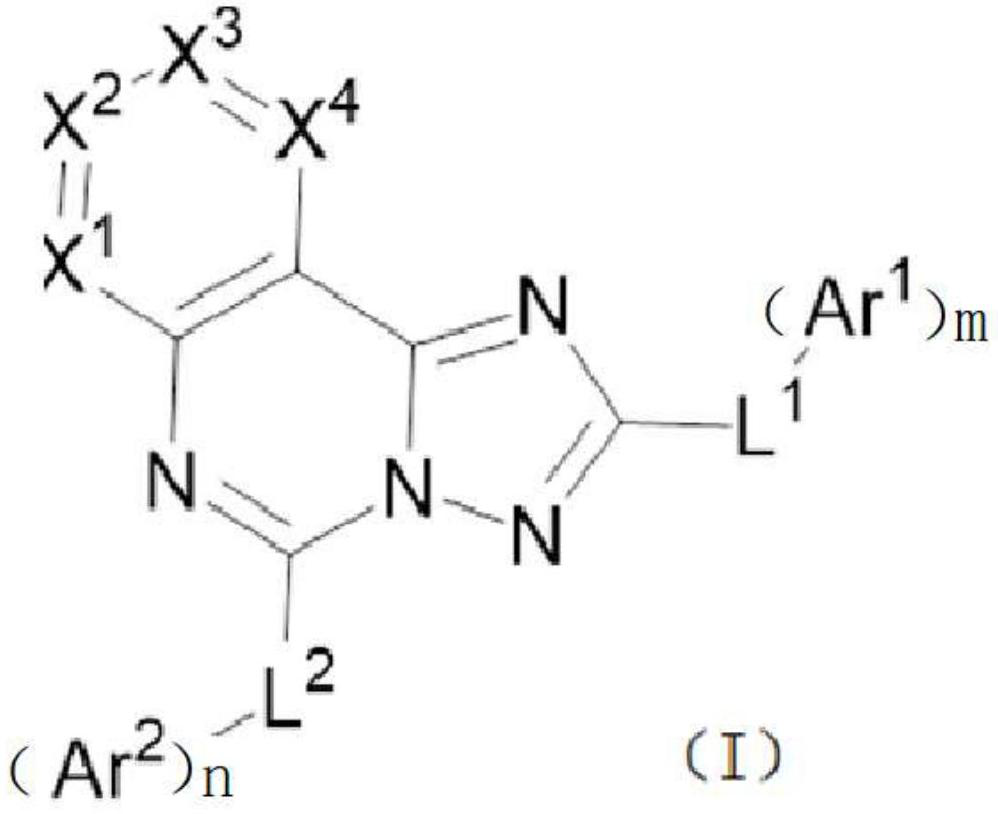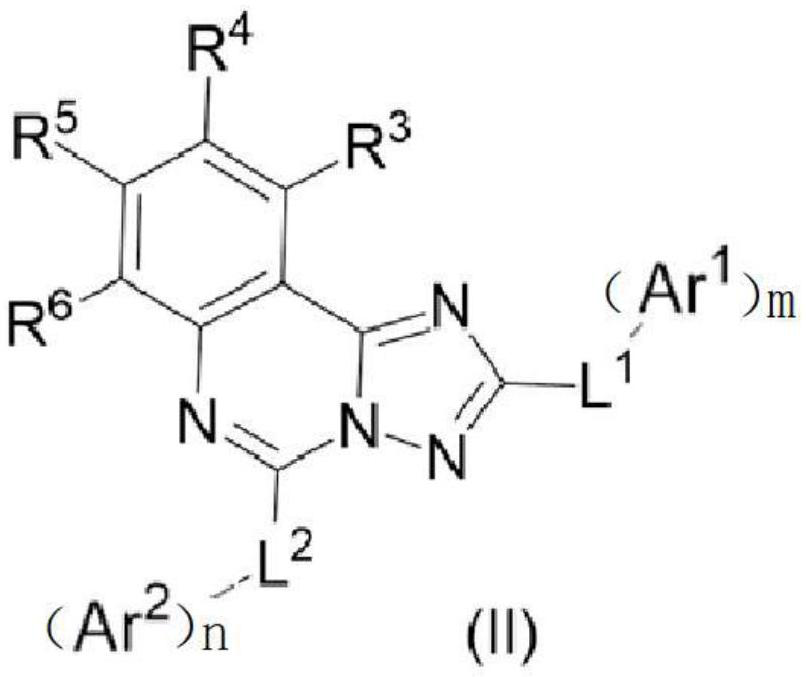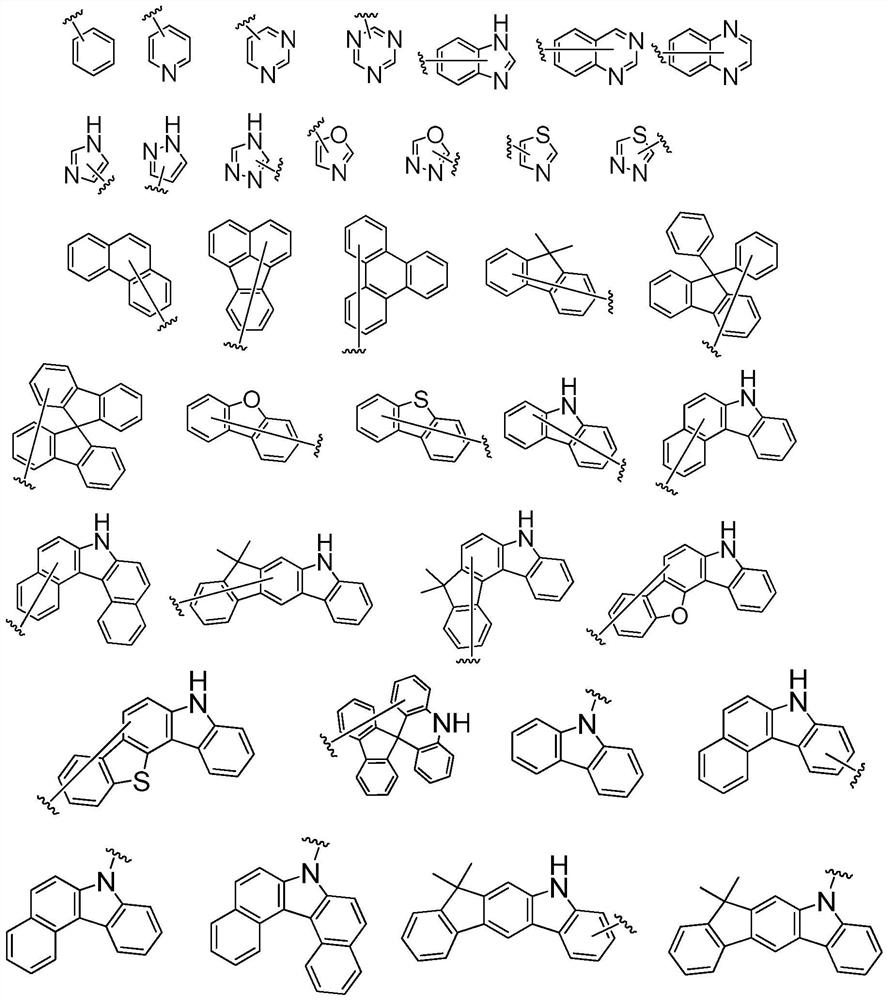Organic compound for light-emitting device, application of organic compound and organic light-emitting device
An organic compound, unsubstituted technology, applied in the field of organic electroluminescent devices, can solve the problem that the electron injection ability and mobility cannot meet the demand, and achieve the effect of low starting voltage, improving luminous efficiency, and reducing driving voltage
- Summary
- Abstract
- Description
- Claims
- Application Information
AI Technical Summary
Problems solved by technology
Method used
Image
Examples
Embodiment 1
[0277] The preparation process of the organic electroluminescent device in this example is as follows:
[0278] The glass plate coated with the ITO transparent conductive layer is ultrasonically treated in a commercial cleaning agent, rinsed in deionized water, ultrasonically degreased in acetone: ethanol mixed solvent, baked in a clean environment until the water is completely removed, and then cleaned with ultraviolet light. Light and ozone cleaning, and bombardment of the surface with a beam of low-energy cations;
[0279] Place the above-mentioned glass substrate with the anode in a vacuum chamber, and evacuate until the pressure is less than 10 -5 Pa, 10nm HI-3 is vacuum-evaporated on the above-mentioned anode layer film as a hole injection layer;
[0280] Vacuum-evaporated 40nm HT-4 on the hole injection layer as the first hole transport layer of the device;
[0281] Vacuum-evaporated 10nm of HT-14 on the first hole transport layer as the second hole transport layer of...
Embodiment 2-15 and comparative example 1、2 and 3
[0287] An organic electroluminescent device was obtained in the same manner as in Examples, except that compound C9 was replaced with the compounds in Table 1.
[0288] The organic electroluminescent device prepared by the above process is measured as follows:
[0289] The test system measures the driving voltage and current efficiency of the organic electroluminescent devices prepared in the examples and comparative examples. Specifically, the voltage is increased at a rate of 0.1V per second, and it is determined that when the brightness of the organic electroluminescent device reaches 1000cd / m 2 The voltage at this time is the driving voltage, and the current density at this time is measured at the same time; the ratio of the brightness to the current density is the current efficiency.
[0290] Under the same brightness, according to the above-mentioned preparation steps and test methods, the device embodiments and comparative examples of the present invention are complete...
Embodiment 16
[0296] The glass plate coated with the ITO transparent conductive layer is ultrasonically treated in a commercial cleaning agent, rinsed in deionized water, ultrasonically degreased in acetone: ethanol mixed solvent, baked in a clean environment until the water is completely removed, and then cleaned with ultraviolet light. Light and ozone cleaning, and bombardment of the surface with a beam of low-energy cations;
[0297] Place the above-mentioned glass substrate with the anode in a vacuum chamber, and evacuate until the pressure is less than 10 -5 Pa, 10nm HI-3 is vacuum-evaporated on the above-mentioned anode layer film as a hole injection layer;
[0298] Vacuum-evaporated 40nm HT-4 on the hole injection layer as the first hole transport layer of the device;
[0299] Vacuum-evaporated 10nm of HT-14 on the first hole transport layer as the second hole transport layer of the device;
[0300] Vacuum-deposit a 20nm light-emitting layer on the second hole transport layer, the ...
PUM
 Login to View More
Login to View More Abstract
Description
Claims
Application Information
 Login to View More
Login to View More - R&D
- Intellectual Property
- Life Sciences
- Materials
- Tech Scout
- Unparalleled Data Quality
- Higher Quality Content
- 60% Fewer Hallucinations
Browse by: Latest US Patents, China's latest patents, Technical Efficacy Thesaurus, Application Domain, Technology Topic, Popular Technical Reports.
© 2025 PatSnap. All rights reserved.Legal|Privacy policy|Modern Slavery Act Transparency Statement|Sitemap|About US| Contact US: help@patsnap.com



